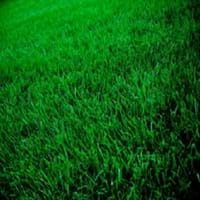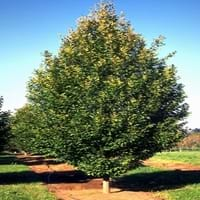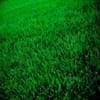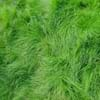Life Span
Perennial
Perennial
Origin
China
Europe, Eastern Europe, Southern Europe, Western Europe, Turkey
Types
Bigleaf hydrangea, Hortensia, Smooth hydrangea, Oakleaf hydrangea, Annabelle
Not Available
Number of Varieties
Not Available
Habitat
Forest edges, Hillside, Woods
Hedge, Woodland Garden Canopy
USDA Hardiness Zone
7-10
4-8
Sunset Zone
7, 9, 10
2a, 2b, 3a, 3b, 4, 5, 6, 7, 8, 9, 14, 15, 16, 17
Habit
Spreading
Oval or Rounded
Flower Color
Blue, Dark Purple, Light Purple, Red, White
Yellow, Green
Flower Color Modifier
Bicolor
Bicolor
Fruit Color
Not Available
Yellow, Green, Brown
Leaf Color in Spring
Light Green, Yellow green
Green, Light Green
Leaf Color in Summer
Light Green
Green, Dark Green
Leaf Color in Fall
Light Green, Yellow green
Yellow, Yellow green, Orange Red
Leaf Color in Winter
Light Green, Lemon yellow, Tan
Not Available
Leaf Shape
Oblovate
Ovate and toothed
Plant Season
Spring, Summer, Fall, Winter
Summer, Fall, Winter
Sunlight
Full Sun
Full Sun, Partial Sun, Partial shade
Type of Soil
Loam, Sand
Clay, Loam
The pH of Soil
Acidic, Neutral
Acidic, Neutral
Soil Drainage
Well drained
Average
Bloom Time
Indeterminate
Spring
Tolerances
Cold climate, Drought
Pollution, Drought
Where to Plant?
Ground
Ground
How to Plant?
Seedlings
Seedlings
Plant Maintenance
Medium
Medium
Watering Requirements
Average Water Needs, Over-head watering, Requires watering in the growing season
Requires regular watering
In Summer
Lots of watering
Lots of watering
In Spring
Moderate
Moderate
In Winter
Average Water
Average Water
Soil pH
Acidic, Neutral
Acidic, Neutral
Soil Type
Loam, Sand
Clay, Loam
Soil Drainage Capacity
Well drained
Average
Sun Exposure
Full Sun
Full Sun, Partial Sun, Partial shade
Pruning
Prune to control growth, Remove dead leaves
Remove dead or diseased plant parts
Fertilizers
All-Purpose Liquid Fertilizer, Nitrogen, Phosphorous
All-Purpose Liquid Fertilizer
Pests and Diseases
Red blotch
Aphids, Coral Spot, Powdery mildew
Plant Tolerance
Drought
Drought
Flowers
Insignificant
Insignificant
Flower Petal Number
Single
Not Available
Foliage Texture
Medium
Medium
Foliage Sheen
Glossy
Glossy
Attracts
Bees, Flies
Caterpillar, Not Available
Allergy
Chest tightness, Diarrhea, Dizziness, Nausea, Vomiting
Pollen
Aesthetic Uses
Beautification, Ground Cover, Landscape Designing, Showy Purposes
Bonsai
Beauty Benefits
No Beauty Benefits
Not Available
Environmental Uses
Air purification, Food for insects, Prevent Soil Erosion
Air purification
Medicinal Uses
Fever, Kidney problems, Urinary tract problems
Bach, Haemostatic, Ophthalmic
Part of Plant Used
Flowers, Root
Bark, Leaves, Wood
Other Uses
Decoration Purposes, Showy Purposes
Used as fuel, Used to make yellow dye
Used As Indoor Plant
No
Yes
Used As Outdoor Plant
Yes
Yes
Garden Design
Lawns and Turf
Feature Plant, Hedges, Screening / Wind Break, Shade Trees, Street Trees
Botanical Name
EREMOCHLOA ophiuroides
CARPINUS betulus
Common Name
Centipede Grass
European Hornbeam
In Hindi
Hydrangea
European Hornbeam
In German
Hortensie
Hainbuche
In French
Hortensia
Hornbeam européenne
In Spanish
Hortensia
Europeo carpe
In Greek
υδραγεία
Ευρωπαϊκή Γαύρος
In Portuguese
Hortênsia
Carpino Europeia
In Polish
Hortensja
Europejski Grab
In Latin
Hibiscus
Carpinus betulus
Phylum
Embryophyta
Magnoliophyta
Class
Liliopsida
Magnoliopsida
Order
GLUMIFLORAE
Fagales
Family
Poaceae
Betulaceae
Genus
Ophiuroides
Carpinus
Clade
Angiosperms, Monocots
Angiosperms, Eudicots, Rosids
Tribe
Andropogoneae
Carpineae
Subfamily
Sorghum
Coryloideae
Number of Species
Not Available
Importance of Centipede Grass and European Hornbeam
Want to have the most appropriate plant for your garden? You might want to know the importance of Centipede Grass and European Hornbeam. Basically, these two plants vary in many aspects. Compare Centipede Grass and European Hornbeam as they differ in many characteristics such as their life, care, benefits, facts, etc. Every gardener must at least have the slightest clue about the plants he wants to plant in his garden. Compare their benefits, which differ in many ways like facts and uses. The medicinal use of Centipede Grass is Fever, Kidney problems and Urinary tract problems whereas of European Hornbeam is Bach, Haemostatic and Ophthalmic. Centipede Grass has beauty benefits as follows: No Beauty Benefits while European Hornbeam has beauty benefits as follows: No Beauty Benefits.
Compare Facts of Centipede Grass vs European Hornbeam
How to choose the best garden plant for your garden depending upon its facts? Here garden plant comparison will help you to solve this query. Compare the facts of Centipede Grass vs European Hornbeam and know which one to choose. As garden plants have benefits and other uses, allergy is also a major drawback of plants for some people. Allergic reactions of Centipede Grass are Chest tightness, Diarrhea, Dizziness, Nausea and Vomiting whereas of European Hornbeam have Pollen respectively. Having a fruit bearing plant in your garden can be a plus point of your garden. Centipede Grass has no showy fruits and European Hornbeam has no showy fruits. Also Centipede Grass is not flowering and European Hornbeam is not flowering . You can compare Centipede Grass and European Hornbeam facts and facts of other plants too.





